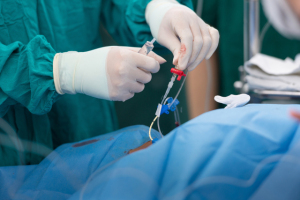by
Lauren Dubinsky, Senior Reporter | September 15, 2015
While peripherally inserted central catheters (PICCs) provide fluids and nutrition, deliver medications and monitor important vital signs, they also pose risks for vein clots and infections. The University of Michigan Health System has developed the Michigan Appropriateness Guide for Intravenous Catheters (MAGIC) to help clinicians select the safest devices for each individual adult patient.
“The easiest way to prevent these complications is not to place a PICC in the first place,” Dr. Vineet Chopra, lead author of the criteria, said in a statement. “So we set out to determine when the use of a PICC is appropriate, and when other choices are the best.”
The criteria are based on 15 experts’ reviews of over 600 scenarios of different patients and treatments. It includes color-coded charts and algorithms that specify what devices are suitable and unsuitable for each scenario.
The experts included physicians and nurses from vascular nursing, anesthesiology, radiology, critical care, hospital medicine, infectious disease and oncology. A patient who experienced complications from various IV devices was also included in the panel of experts.
In most of the scenarios, all of the experts agreed what devices were most appropriate and least appropriate, but in some cases where the evidence was neutral they disagreed and indicated that more research is needed.
There are 47 hospitals in Michigan that are currently testing the criteria as part of the Michigan Hospital Medicine Safety Consortium. The research team is hoping that other clinicians will start using the criteria even as they test it.
They have launched a
website, which includes information on how clinicians should care for patients who have a vascular access device in the hospital, nursing home or their home. It will also be updated with any issues and research related to PICCs.
